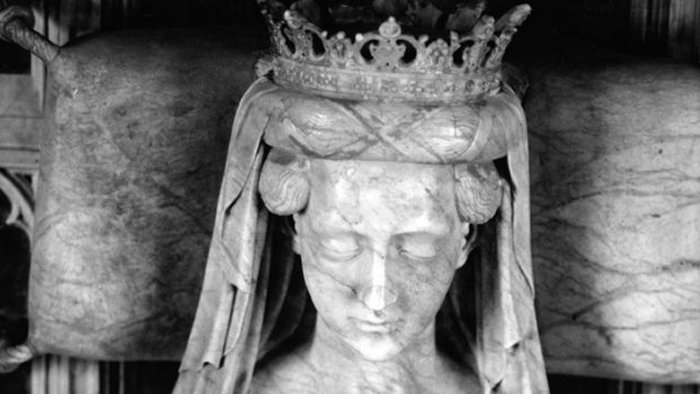Mysterious Grave Of King Valdemar IV Atterdag – Will The 600-Year-Old Historical Puzzle Ever Be Solved?
Ellen Lloyd - AncientPages.com - In 1375, King Valdemar IV Atterdag was put to rest in Vordingborg, Denmark’s’ the biggest royal castle.
For over 600 years scientists and historians have been puzzled by the strange circumstances surrounding his grave.
Before King Valdemar IV died, he expressed that he had the wish to be buried in the Vordingborg Castle.
Yet, for some unknown reasons, his daughter, Margaret I asked the Pope for permission and moved Valdemar Atterdag’s tomb from its original place in 1377 to the abbey in Sorø instead.
Valdemar IV was one of the most important kings in Denmark. Atterdag means "Dawn of a new day" and in many ways, this powerful King was the beginning of a new era.
He reigned between 1340 - 1375 and when he ascended the throne, Denmark was a much-divided country. He successfully managed to unite the country and bring all people together.
King Valdemar IV Atterdag lived during a time when kings’ burial places had special symbolic significance. Royals were often buried in Danish churches or cathedrals, so why was his resting place moved?
Danish archaeologist and research assistant at the University of Aarhus, Lars Sass Jensen is trying to get to the bottom with this historical mystery. One of his goals is trying to solve the reason why the greatest king in Denmark was transferred from the biggest castle in the country to a small monastery.
Vordingborg was at that time the most important fortress in Denmark and since Valdemar began to re-conquer Denmark in 1341, it was the first castle, he would redeem Zealand. This shows this particular castle was of great importance to him, Jensen said.
Jensen believed King Valdemar IV Atterdag saw the Vordingborg Castle as a monument of himself, which is the reason why he wanted to be buried there.
The Danish king was inspired by a North German order, whose knights, were also buried in their main strongholds.
The King visited the knighthood of the Teutonic Order in 1346 in connection with the sale of Estonia.
See also:
Cnut The Great – England’s Danish King And Ruler Of One Of The Largest Nordic Empires
Legendary Harald ‘Bluetooth’ King of Denmark – ‘Who Made The Danes Christian’
Northern Germany was of a special significance to the Danes and Vordingborg Castle was strategically located close to the sea. This helped raids as well as trades.
“King Valdemar Atterdag’s choice of burial place is perhaps the most direct sign of inspiration from the Teutonic Order,” Jensen said.
So why would his daughter defy his wishes to move the grave to Soro Abbey Church in 1377?
According to Jensen, Queen Margate I sought the Pope’s permission to move her father stating that her parents were reunited, but her mother Helvig, who was and still is buried at Esrom Monastery in North Zealand, was never moved to Sorø.
However, Jensen is not convinced this was the real motive. In his opinion, the King’s tomb was deliberately moved for political reasons.
By moving King Valdemar from Vordingborg to Soro, the great castle lost a lot of its symbolic importance.
"I'm sure that there must have been a good reason why she did as she did,” said Birgitte Bøggild Johannsen researcher at the National Museum and a contributor to the book "Danish Royal Tombs'.
The Vordingborg castle tells a remarkable story of kings and power in medieval times. The great castle never entirely lost its significance and remains the town’s great attraction.
The case of King Valdemar’s grave remains unsolved, at least for now.
Copyright © AncientPages.com & Ellen Lloyd All rights reserved. This material may not be published, broadcast, rewritten or redistributed in whole or part without the express written permission of AncientPages.com and Ellen Lloyd
About the author:
Ellen Lloyd – is the owner of AncientPages.com and an author who has spent decades researching ancient mysteries, history, myths, legends and sacred texts, but she is also very interested in astronomy, astrobiology and science in general.
More From Ancient Pages
-
 Tokoloshe: Demonic Creature That Feeds On Spiritual Energy Of Its Victims
Featured Stories | Sep 9, 2020
Tokoloshe: Demonic Creature That Feeds On Spiritual Energy Of Its Victims
Featured Stories | Sep 9, 2020 -
 On This Day In History: William Penn – English Philosopher, Quaker And Founder Of Pennsylvania Was Born – Oct 14, 1644
News | Oct 14, 2016
On This Day In History: William Penn – English Philosopher, Quaker And Founder Of Pennsylvania Was Born – Oct 14, 1644
News | Oct 14, 2016 -
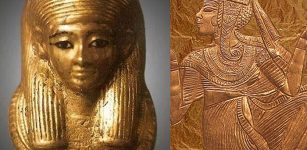 Mystery Of Dakhamunzu And The Zannanza Affair – Was Queen Ankhesenamun Hiding Her Identity?
Featured Stories | Feb 1, 2019
Mystery Of Dakhamunzu And The Zannanza Affair – Was Queen Ankhesenamun Hiding Her Identity?
Featured Stories | Feb 1, 2019 -
 Ancient Warming Event May Have Been Trigged By Changes In Earth’s Orbit
Archaeology | Dec 13, 2022
Ancient Warming Event May Have Been Trigged By Changes In Earth’s Orbit
Archaeology | Dec 13, 2022 -
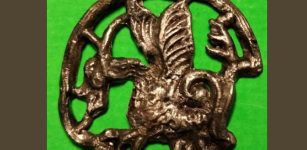 Medieval Pilgrim’s Badge (‘Pilgrim’s Sign’) Depicting A Basilisk Dragon In A Circle Discovered In Southeastern Poland
Artifacts | Mar 5, 2024
Medieval Pilgrim’s Badge (‘Pilgrim’s Sign’) Depicting A Basilisk Dragon In A Circle Discovered In Southeastern Poland
Artifacts | Mar 5, 2024 -
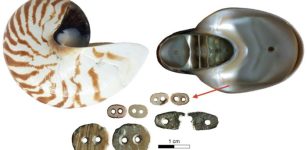 Sea Sequin ‘Bling’ Links Indonesian Islands’ Ancient Communities
Archaeology | Aug 16, 2023
Sea Sequin ‘Bling’ Links Indonesian Islands’ Ancient Communities
Archaeology | Aug 16, 2023 -
 7,000-Year-Old Unique Artifacts Discovered Under Melting Ice In Canada
Archaeology | Nov 30, 2023
7,000-Year-Old Unique Artifacts Discovered Under Melting Ice In Canada
Archaeology | Nov 30, 2023 -
 Women’s March On Versailles: One Of The Most Significant Events Of The French Revolution
Ancient History Facts | Oct 11, 2018
Women’s March On Versailles: One Of The Most Significant Events Of The French Revolution
Ancient History Facts | Oct 11, 2018 -
 Why Is The Hungry Ghost Festival Celebrated In August?
Ancient Traditions And Customs | Aug 12, 2019
Why Is The Hungry Ghost Festival Celebrated In August?
Ancient Traditions And Customs | Aug 12, 2019 -
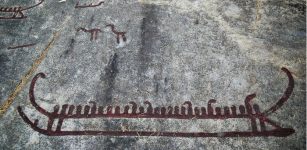 Bronze Age Scandinavians Crossed The Sea Before The Vikings – New Computer Model Reveals
Archaeology | Apr 7, 2025
Bronze Age Scandinavians Crossed The Sea Before The Vikings – New Computer Model Reveals
Archaeology | Apr 7, 2025 -
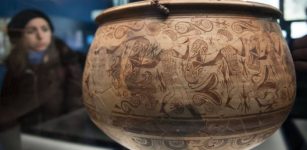 Ancient Secrets Of Iberian Warrior Vase – 2,000-Year-Old Masterpiece Of Art
Archaeology | Dec 5, 2017
Ancient Secrets Of Iberian Warrior Vase – 2,000-Year-Old Masterpiece Of Art
Archaeology | Dec 5, 2017 -
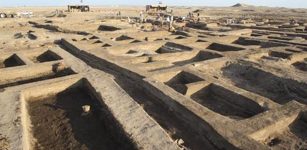 Remains of Santorini Volcanic Eruption Discovered West Of Suez Canal
Archaeology | Jan 3, 2016
Remains of Santorini Volcanic Eruption Discovered West Of Suez Canal
Archaeology | Jan 3, 2016 -
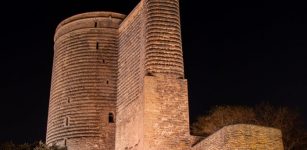 Baku’s Mysterious Maiden Tower – Legend Of The Daughter Of Fire Who Saved The Sacred Temple May Be True
Featured Stories | Jul 5, 2021
Baku’s Mysterious Maiden Tower – Legend Of The Daughter Of Fire Who Saved The Sacred Temple May Be True
Featured Stories | Jul 5, 2021 -
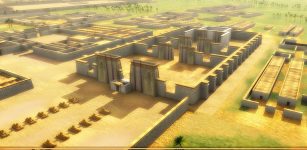 Ancient Egyptian Capital Tell El-Amarna Mapped Through Satellite Imagery System
Civilizations | Sep 11, 2015
Ancient Egyptian Capital Tell El-Amarna Mapped Through Satellite Imagery System
Civilizations | Sep 11, 2015 -
 Researchers Confirm Clovis People Used Great Lakes Camp Annually About 13,000 Years Ago
Archaeology | Sep 12, 2024
Researchers Confirm Clovis People Used Great Lakes Camp Annually About 13,000 Years Ago
Archaeology | Sep 12, 2024 -
 Unexplained Mystery Of Secret Knowledge And Extraordinary Sightings Hidden In An Author’s Book
Featured Stories | Nov 25, 2021
Unexplained Mystery Of Secret Knowledge And Extraordinary Sightings Hidden In An Author’s Book
Featured Stories | Nov 25, 2021 -
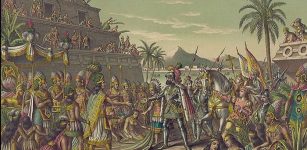 Remains Of Aztec Palace That Belonged To Axayacatl, Father Of Montezuma Unearthed In Mexico City
Archaeology | Jul 18, 2020
Remains Of Aztec Palace That Belonged To Axayacatl, Father Of Montezuma Unearthed In Mexico City
Archaeology | Jul 18, 2020 -
 Unexplained Disappearance Of East Balkan Civilizations – Discovery Of Unusual Mini Artifacts – Part 1
Ancient Mysteries | Apr 28, 2018
Unexplained Disappearance Of East Balkan Civilizations – Discovery Of Unusual Mini Artifacts – Part 1
Ancient Mysteries | Apr 28, 2018 -
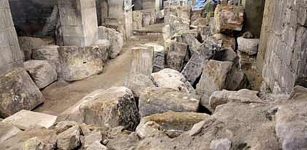 Archaeologists Excavate Two Roman Bath Hidden In A Dark Passage Below The Streets Of Bath
Archaeology | Apr 26, 2016
Archaeologists Excavate Two Roman Bath Hidden In A Dark Passage Below The Streets Of Bath
Archaeology | Apr 26, 2016 -
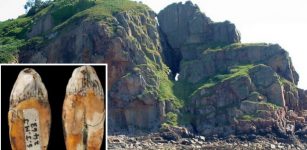 Evidence Of A Hybrid Population Of Neanderthals And Modern Humans Discovered At La Cotte De St Brelade
Archaeology | Feb 9, 2021
Evidence Of A Hybrid Population Of Neanderthals And Modern Humans Discovered At La Cotte De St Brelade
Archaeology | Feb 9, 2021


